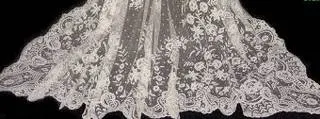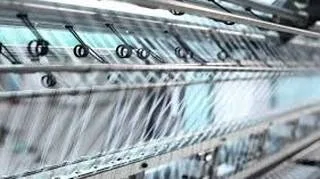Warp knitting
Warp
knitting is a knitting technique where the yarn refers to zigzags along the
length of the fabric which means knitting adjacent columns of wells instead of
a single row or course. Since the number of individual strands or edges of the yarn
for warp knitting is equal to the number of stitches in a row, warp knitting is
often done by machine rather than by hand.
History of warp knitting
In
1775, a mechanic named Josiah Crane was given credit for the discovery. In 1778, he probably sold his invention to
Richard March, who patented a warped frame. In March of three years, he probably
discussed the device with Morris who filed a similar patent. Brussels Point for
a twisting machine for making lace. These early machines were modifications to
the extra warp-beamed stocking frame. In 1795, the machine was successfully
used to make lace fabric. Warp frames can be used with any thread and warps
provide a specific anchor for transverse threads. Half the thread of the 1804
Whittaker frame was attached to a warp beam and half of the wound was in
bobbins attached to the top of the car. Heathcote's 1808 Whittaker frame
development was originally a warp knitting frame.
Types of warp knitting fabric
There
are mainly two types of warp knitting
fabric, such as below-
Raschel warp knitting
Thicker
yarn is commonly used for Raschel knitting and recently became interested in
knitting the original yarn on these machines. In the Raschel machine, the
needles move to a ground steel plate that is called a trick plate. At the top
of this plate, the edge determines the level of complete loops in the needle
shank. Loops prevent the loops from rising to the top when the needles are
pulled in by pulling down the fabric and dipping into the needles. The guide
bars thread the needles. During the knitting cycle, the needles start at the
lowest point, when the previous loop barely closes and the new loop joins the
fabric with the needle hook. The needles are raised when the new loop opens
the latches and ends in the shank at the bottom of the latch. The guide bars
then sway through the needles and the front bar moves an indicator sideways.
When the guide bar goes back to the front of the machine, the front bar puts
the thread on the hook. The needles fall off, the previous loops close the
latch to trap the new loops and the old loops are discarded. Raschel made in
different shapes are usually more open in construction than other warp nuts and
thicker in the ground.
Tricot warp knitting
The
tricot, a warp knit made of two sets of threads, is characterized by the
delicate ribs running vertically over the face of the fabric and horizontally
behind it. The tricot knitting machine makes lightweight fabrics, weighing less
than four ounces per square yard. Its development was stimulated by the
invention of the so-called FNF compound needle, a powerful device that was
later misused but it made possible production speeds. Although about half of
the current use of the tricot machine is made of ordinary fabric in two guide
bars, interest in pattern knitting is growing. This type of knitting requires
close control over the northern bar speed of the warp-knitting cycle, achieved
by the control chain made of chunky metal links.
The specialty of warp knitting
The scope for warp knitting has been enhanced by the development of methods of placing in non-knitted threads for the effects of color, density, and texture, but such threads can also be a necessary part of the structure. The base of most Raschel fabrics, for example, forms the front bar crochet chains or pillars in a form called zigzagging across several columns that are attached by zigzag inlets. An extension of conventional warp knitting is the co-way-night warp-knitting machine, which produces fabrics featuring both woven and non-woven fabrics. These warp threads form a fabric resembling a woven fabric on one side, interlaced with a Quasi Weft.
Advantages of warp knitting
i.
In general, the warp-knitted fabric is more stable than the weft-knitted fabric. By
modifying its structure the warp-knitted can be as good as woven fabric.
ii.
The warp-knitted fabrics are thinner than double-knitted fabrics and the loops
are smaller than double-knitted fabrics.
iii.
Most regular warp-knitted fabrics give nice, clean, and balanced loops on the
surface. Generally, the technical face and back for warp-knitted are
different.
iv.
Fabric can be produced from a minimum number of yarns, even only one yarn.
v.
Loop size can be varied to a wide extent and that too very easily.
vi.
The extensibility and stability of the knitted fabric can be engineered.
vii. Wastage of yarn during the conversion of yarn into fabric by knitting is negligible.









0 Comments